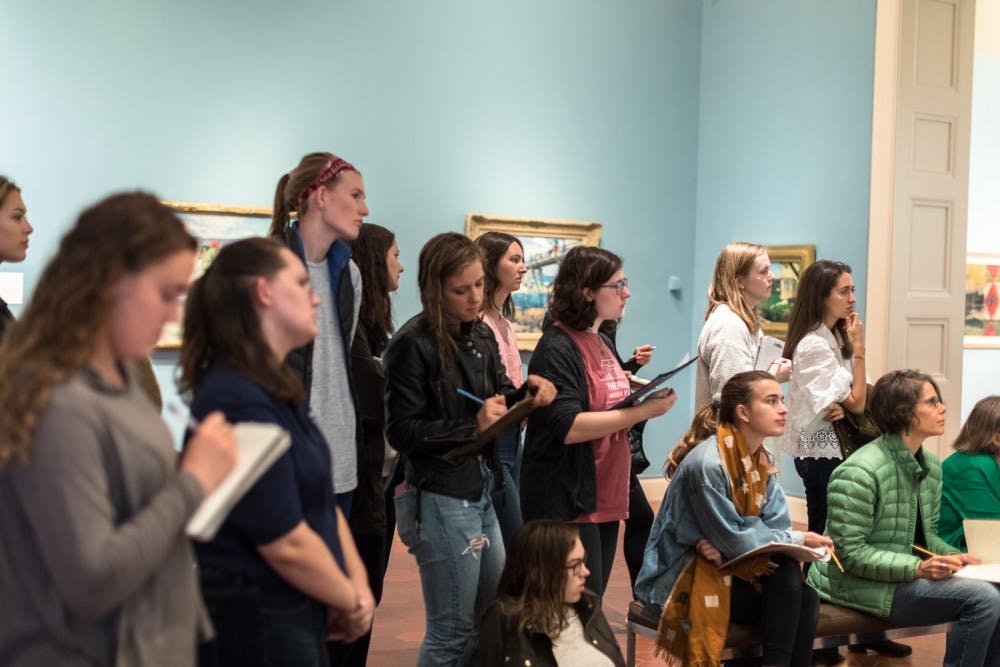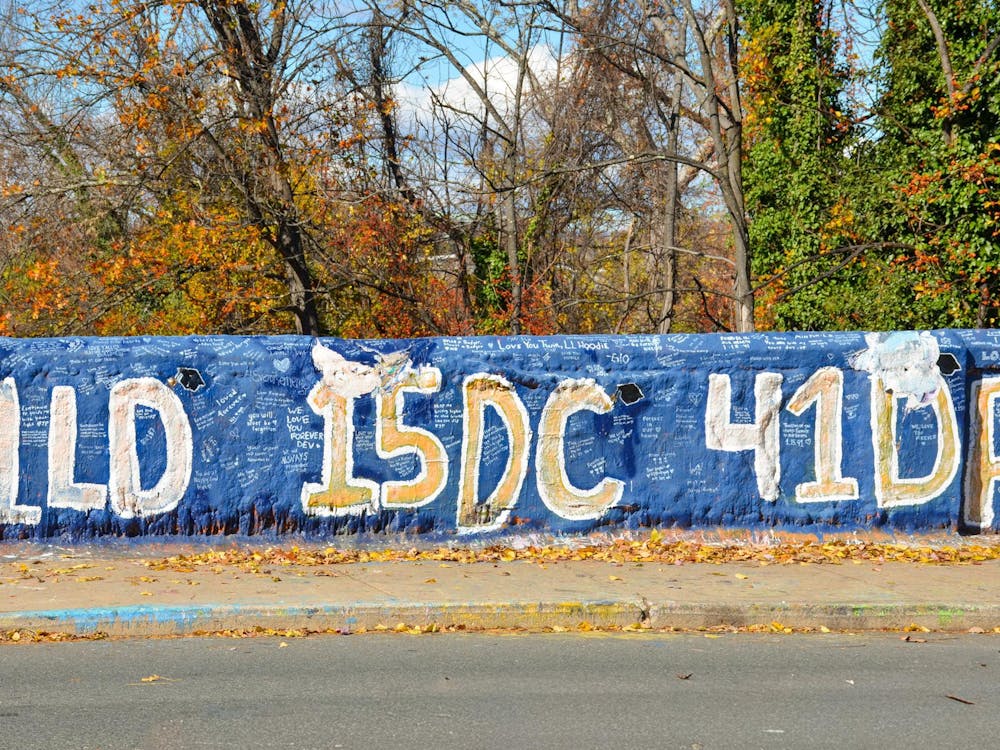If you’ve ever toured the Fralin Museum of Art at the University, it’s likely you’ve come in contact with the museum’s admired student docents. This year, the Fralin celebrates its 30th anniversary of the Student Docent program, a program which serves as a channel for curious, enthusiastic students to discover, ignite and share their passion for art with students and members of the Charlottesville community by encouraging interaction and connection with the art.
The Student Docent program is a competitive group that strives to champion the role of art in people’s lives by attracting students with a curiosity and appreciation for the Fralin and its exhibits.
Docent coordinator Emily Lazaro speaks of the purpose these students serve once they join the team of art aficionados.
“Student docents teach conversation-based interactive tours of the works of art on view at the Fralin,” Lazaro said. “We have a number of school groups and groups from Central Virginia retirement communities, as well as general people from the community who schedule tours that the student docents lead.”
Prior to giving these personalized, 45 to 60 minute tours, student docents participate in a 12-week long training course, where they spend 2 hours a week in classes designed to look at the field of museum education. They learn how to best educate their tourists by partaking in the classes, observing veteran docents, interacting with artists and practicing their run-throughs of the art tours.
Because the Fralin is an art museum, many of the approximately 60 student docents are art history or studio art majors, but this is by no means a prerequisite to becoming a Student Docent. In fact, the University and museum pride themselves on the diversity in their student docents, as the program attracts driven students across varying fields of study, including architecture majors, engineering majors and pre-med students.
“If you have qualities where you can think quick on your feet, you enjoy working with children and students, you are teachable, flexible in your thinking, open to new ideas and willing to have meta-conversations about how people learn, that is what we look for,” Lazaro said.
The coordinators want students to be enthusiastic and appreciative of art, but they really seek to select those students who fall into the “lifelong learner” category and are always hungry for more knowledge. They want the student docents to gain a lot from the program while helping to educate and expand the mindset of their audiences.
“The student docents conjunct with education staff to lead tours as volunteers first and foremost, but they are also dynamic participants in the educational work of the museum,” Lazaro said. “It’s this really significant partnership where University students give tours to elementary to high school student groups, so when [the younger students] come, they are seeing [University] students who study, but are also giving their time and energy to talk about art.”
Student docents help educate their community about art and culture, and the program strives to instill vital skills and values within their Docents as well –– values they can carry for the rest of their lives.
“I think it’s a mutually beneficial relationship because not all docents go to work in art museums, but the skills they acquire as docents, leading groups of people, guiding conversation, actively listening, and being responsive to ideas from groups of people are skills that translate to any field,” Lazaro said.
Morgan Feldenkris, fourth-year College student and current student docent, spoke of how the often political and cultural elements of the art can challenge onlookers and Docents themselves.
“I’ve definitely learned how to be a more effective and emotive communicator of sometimes difficult or even controversial, challenging information,” Feldenkris said. “As someone whose major is very much within humanities and used to these tough discussions, it’s a whole other story when you have to talk about, say cultural appropriation, with fourth graders.”
Once the student docents become approved as qualified tour guides, they can sign up to give tours whenever they want and in their own personal, stylized manner. A job with such power and responsibility does come with various challenges as the students take on such strong new roles within the prominent Fralin.
Fourth-year College student Sarah Vanlandingham has served the Fralin as a student docent for two years now and explained how the program challenges and motivates her.
“I’m a relatively affluent white woman, so when we have artists in museum who try to bring attention to different experiences I’m not familiar with, I need to be careful about how I talk about it, to do it justice for the art and the artist.” Vanlandingham said.
Student docents value artists and their creations to such a great extent. They actively seek to educate themselves — to view the works through all lenses to ensure they can kindle an open, safe environment for audiences to experience the art, welcoming all perspectives as onlookers work to interpret each artists work.
“Each Docent does have his or her own blind spots in terms of their background for teaching works of art that interrogate different identities,” Feldenkris said. “It’s an excellent and interesting challenge to find that middle-ground where your group can really discuss and deliberate on art and what sorts of art are especially relevant to them. It makes the viewing of art potentially more humanizing rather than academic.”
The student docents learn a great deal through the various teachings and lessons they experience throughout their training. As representatives of such a prominent landmark of the University as the Fralin, docents work to not simply give their knowledge to tourists, but rather to listen and to challenge onlookers, so they can really feel and connect with the art they are faced with.
Student docents strive to make every Fralin visitor’s experience the best it can be. They aspire to inspire every person in the room to feel something –– to have a connection –– with the art. They seek a more interactive, empowering experience for visitors –– an experience that stimulates onlookers and encourages them to step outside their own cognition and really try to feel each and every artist’s story.
“This isn’t just a program to impart our knowledge or perspectives,” Feldenkris said. “It’s a little more open-ended and deliberative. At the museum we hold lots of knowledge, but we dole it out strategically to give the power to our visitors.”







